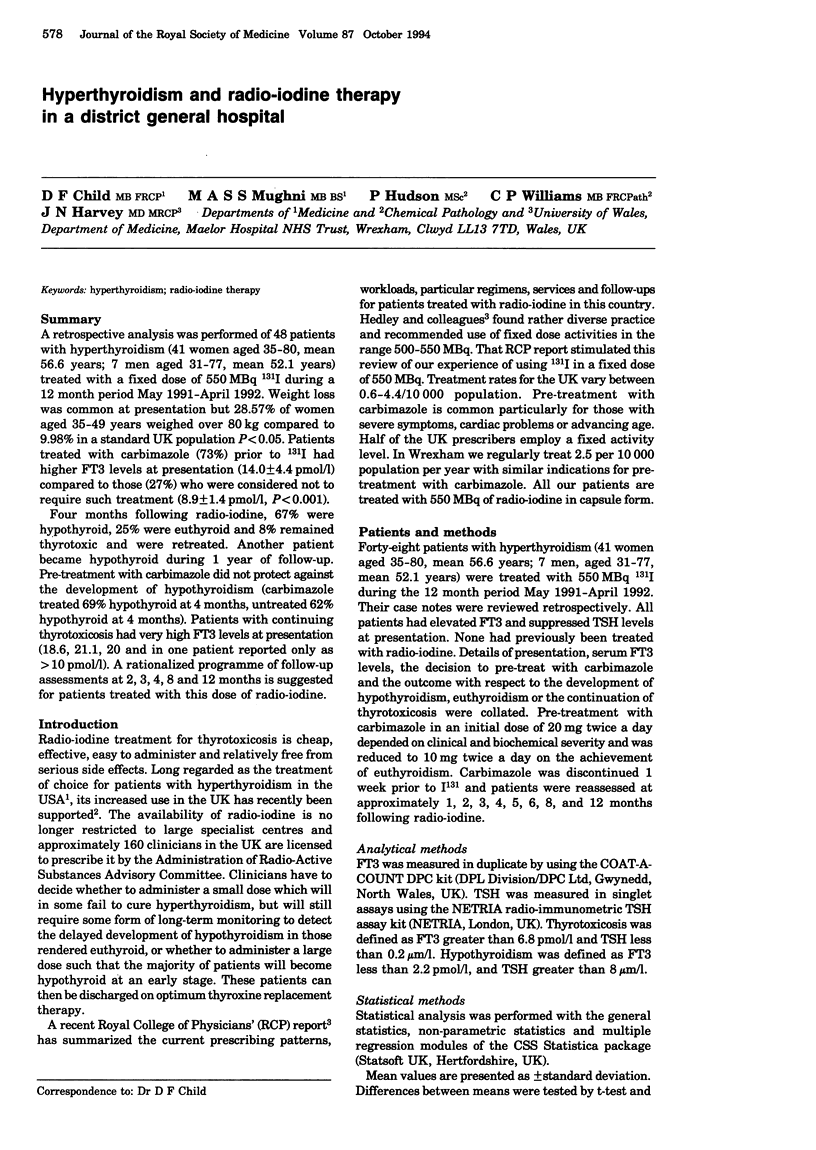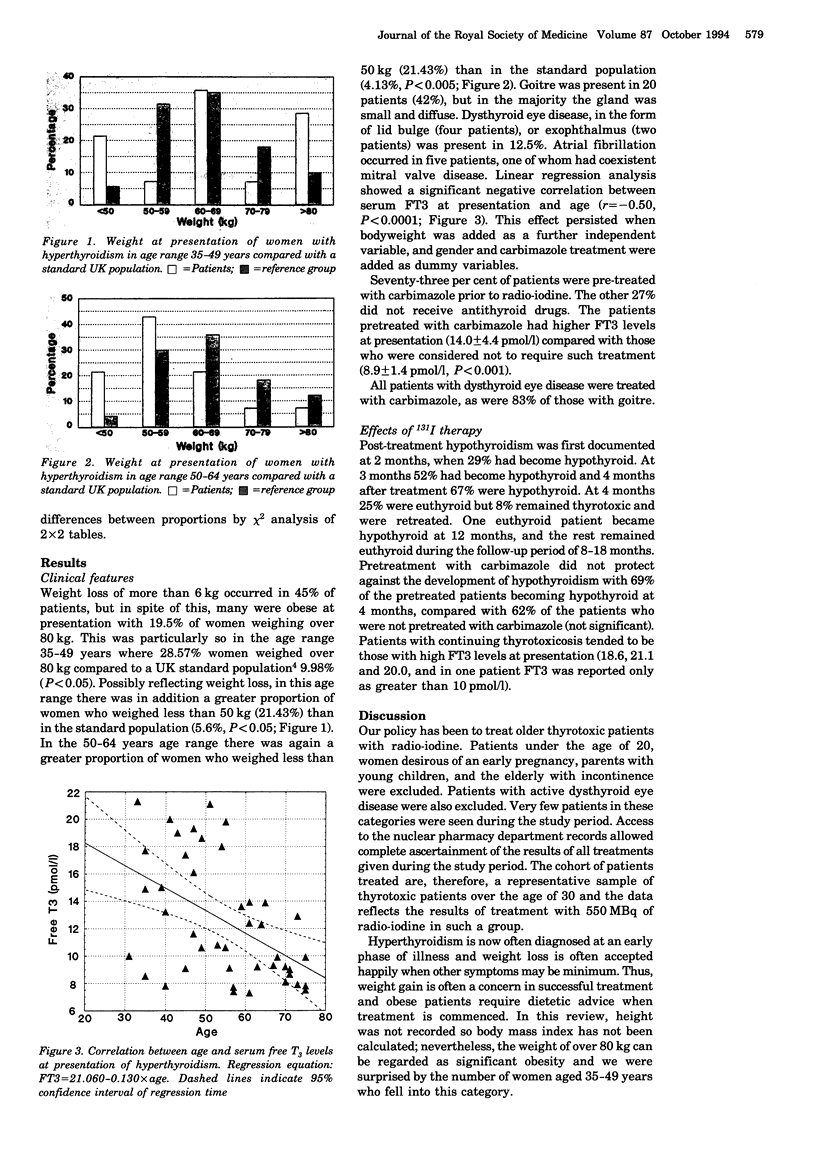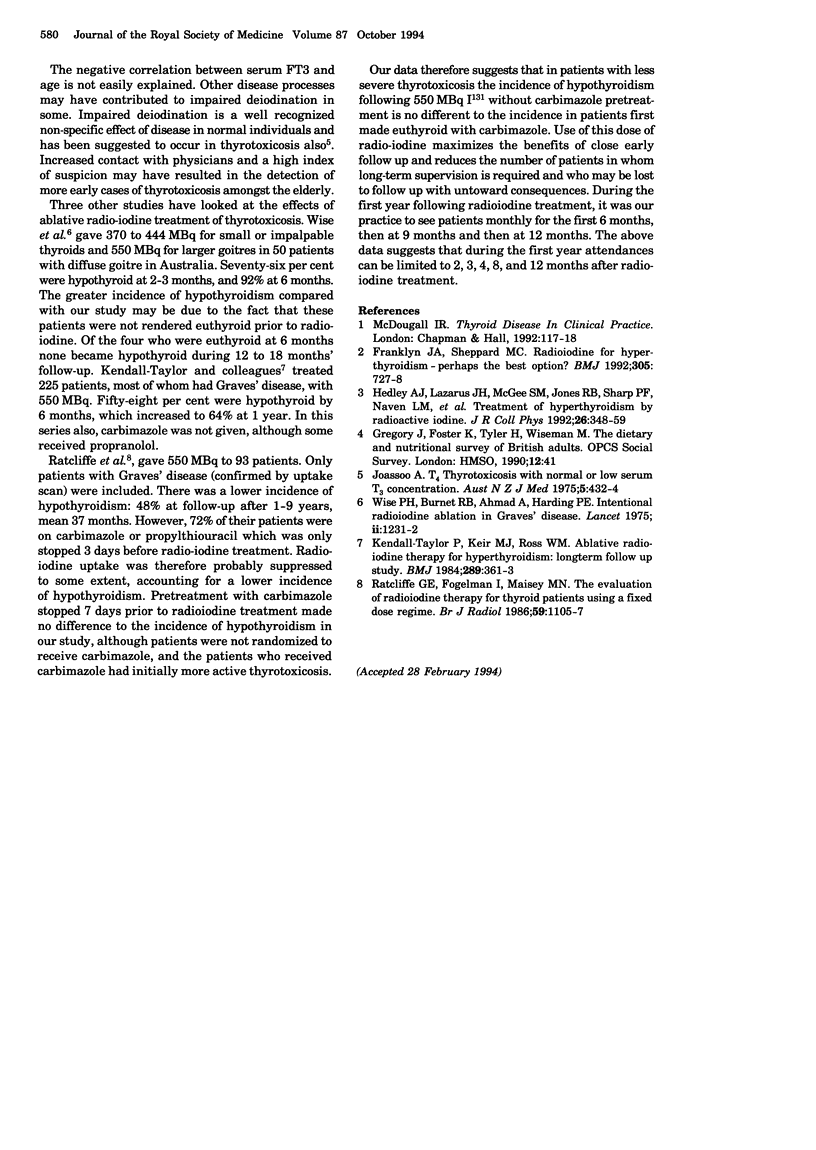Abstract
A retrospective analysis was performed of 48 patients with hyperthyroidism (41 women aged 35-80, mean 56.6 years; 7 men aged 31-77, mean 52.1 years) treated with a fixed dose of 550 MBq 131I during a 12 month period May 1991-April 1992. Weight loss was common at presentation but 28.57% of women aged 35-49 years weighed over 80 kg compared to 9.98% in a standard UK population P < 0.05. Patients treated with carbimazole (73%) prior to 131I had higher FT3 levels at presentation (14.0 +/- 4.4 pmol/l) compared to those (27%) who were considered not to require such treatment (8.9 +/- 1.4 pmol/l, P < 0.001). Four months following radio-iodine, 67% were hypothyroid, 25% were euthyroid and 8% remained thyrotoxic and were retreated. Another patient became hypothyroid during 1 year of follow-up. Pre-treatment with carbimazole did not protect against the development of hypothyroidism (carbimazole treated 69% hypothyroid at 4 months, untreated 62% hypothyroid at 4 months). Patients with continuing thyrotoxicosis had very high FT3 levels at presentation (18.6, 21.1, 20 and in one patient reported only as > 10 pmol/l). A rationalized programme of follow-up assessments at 2, 3, 4, 8 and 12 months is suggested for patients treated with this dose of radio-iodine.
Full text
PDF


Selected References
These references are in PubMed. This may not be the complete list of references from this article.
- Franklyn J., Sheppard M. Radioiodine for hyperthyroidism. BMJ. 1992 Sep 26;305(6856):727–728. doi: 10.1136/bmj.305.6856.727. [DOI] [PMC free article] [PubMed] [Google Scholar]
- Hedley A. J., Lazarus J. H., McGhee S. M., Jones R. B., Sharp P. F., Naven L. M., Beardwell C. G., Hall R. Treatment of hyperthyroidism by radioactive iodine. Summary of a UK national survey prepared for the Royal College of Physicians Committee on Endocrinology and Diabetes. J R Coll Physicians Lond. 1992 Oct;26(4):348–351. [PMC free article] [PubMed] [Google Scholar]
- Joasoo A. T4 thyrotoxicosis with normal or low serum T3 concentration. Aust N Z J Med. 1975 Oct;5(5):432–434. doi: 10.1111/j.1445-5994.1975.tb03052.x. [DOI] [PubMed] [Google Scholar]
- Kendall-Taylor P., Keir M. J., Ross W. M. Ablative radioiodine therapy for hyperthyroidism: long term follow up study. Br Med J (Clin Res Ed) 1984 Aug 11;289(6441):361–363. doi: 10.1136/bmj.289.6441.361. [DOI] [PMC free article] [PubMed] [Google Scholar]
- Ratcliffe G. E., Fogelman I., Maisey M. N. The evaluation of radioiodine therapy for thyroid patients using a fixed-dose regime. Br J Radiol. 1986 Nov;59(707):1105–1107. doi: 10.1259/0007-1285-59-707-1105. [DOI] [PubMed] [Google Scholar]
- Wise P. H., Burnet R. B., Ahmad A., Harding P. E. Intentional radioiodine ablation in Graves' disease. Lancet. 1975 Dec 20;2(7947):1231–1233. doi: 10.1016/s0140-6736(75)92071-1. [DOI] [PubMed] [Google Scholar]


